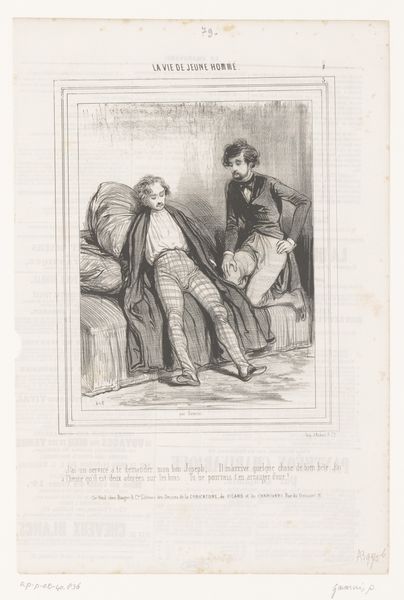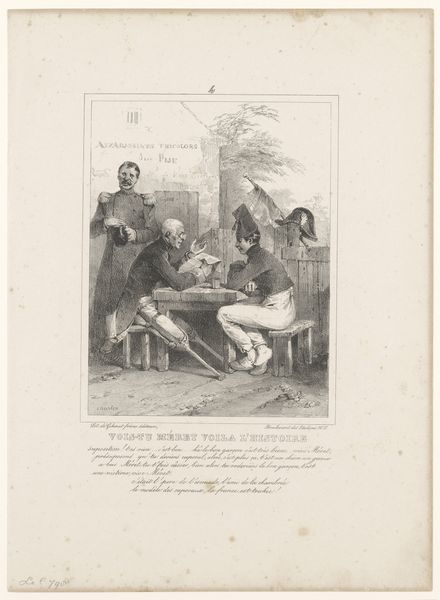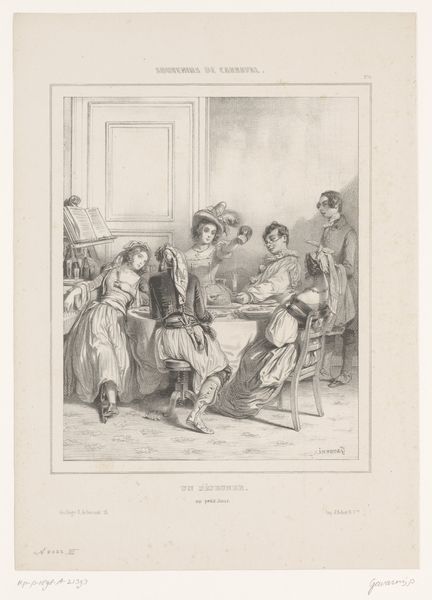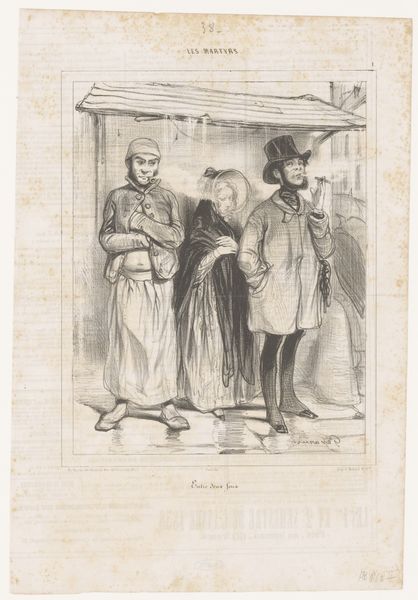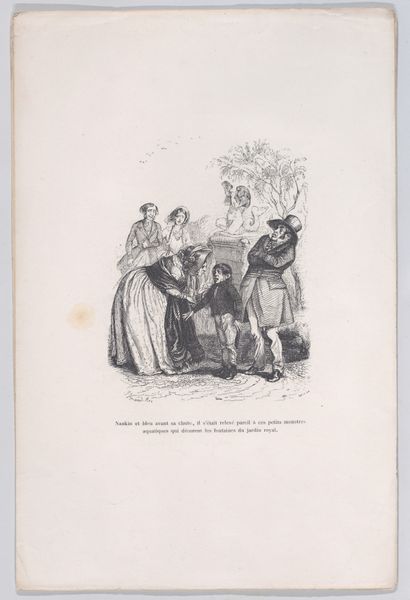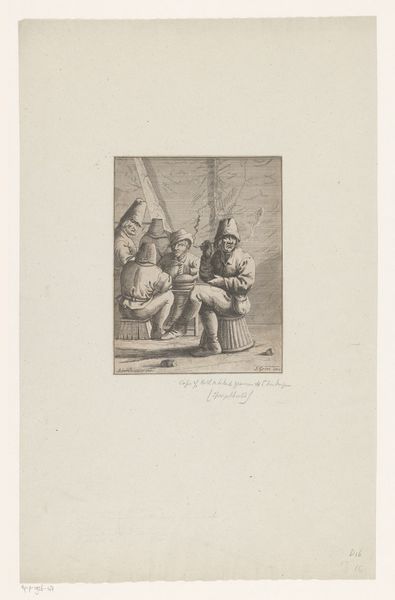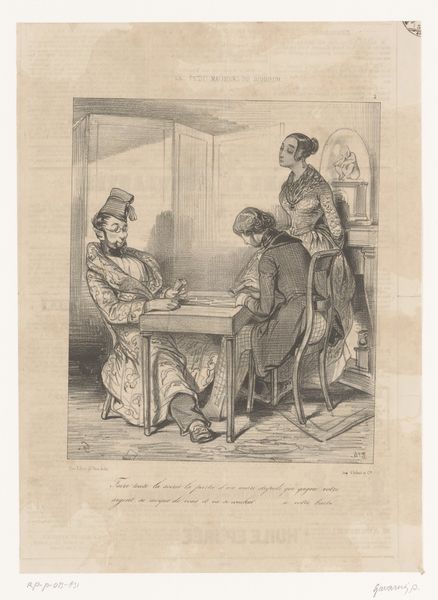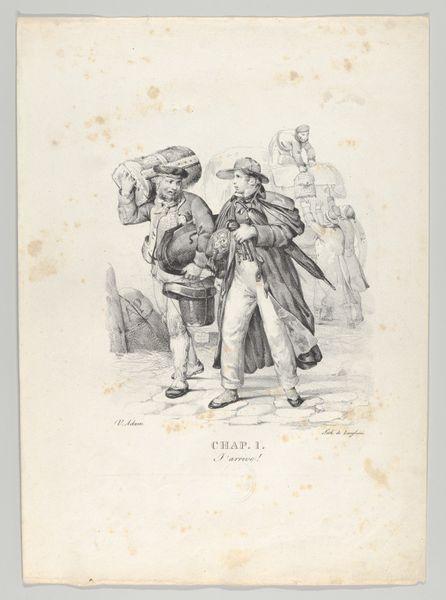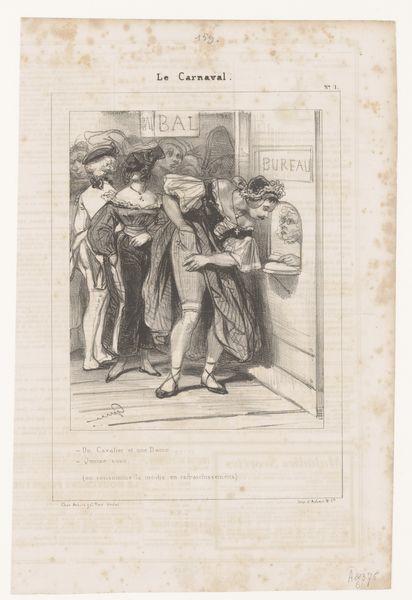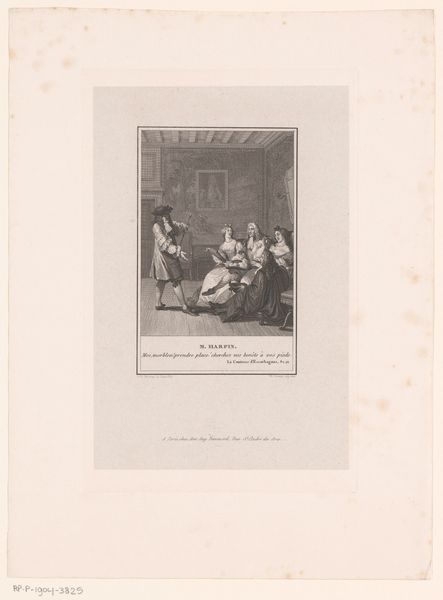
drawing, lithograph, print, pen
#
portrait
#
drawing
#
imaginative character sketch
#
light pencil work
#
mother
#
lithograph
# print
#
caricature
#
pencil sketch
#
figuration
#
personal sketchbook
#
idea generation sketch
#
sketchwork
#
romanticism
#
sketchbook drawing
#
pen
#
pencil work
#
genre-painting
#
storyboard and sketchbook work
#
sketchbook art
Dimensions: height 310 mm, width 233 mm
Copyright: Rijks Museum: Open Domain
Curator: This lithograph by Paul Gavarni, "Kunstenaar tekent omringd door kinderen," dating to 1838, is an interesting example of printmaking as a mode of production. Notice how the medium informs the subject. Editor: Absolutely. So, this piece, rendered with pen and lithograph, depicts an artist drawing amidst a group of children and a woman, perhaps their mother. It seems to capture a moment of observation. How do you read the scene in the context of its materiality? Curator: Let's consider the economic realities: Gavarni's choice of lithography allowed for relatively quick reproduction and distribution. This print becomes a commodity, reflecting the social reality of artists seeking patronage or engaging a broader audience. We see labor, literally in the artist’s work within the image, but also Gavarni's own labour reproduced for mass consumption. Editor: That's a fascinating point about the labour embedded in the lithographic process itself. How does the visual content, the scene depicted, relate to these production concerns? Curator: Gavarni's caricature invites viewers to consider the artist not as some detached genius but as someone embedded in everyday life. What tools and skills did Gavarni use? And who was the audience for this print, do you think? Editor: The immediacy of the sketch-like quality, achieved through lithography, makes it feel very accessible. It creates a sense of intimacy, almost as if we are peering into the artist's sketchbook. Perhaps a rising middle class, eager to consume images of daily life? Curator: Exactly! Gavarni skillfully utilized the printmaking process to represent the life and production of art itself. A very contemporary engagement with the conditions of artistic practice. Editor: That's given me a whole new appreciation for Gavarni’s lithograph, seeing how the materials and method of production informed and shaped the content. Curator: And that understanding underscores how integral the economic and material conditions were to the artwork’s creation and dissemination.
Comments
No comments
Be the first to comment and join the conversation on the ultimate creative platform.
